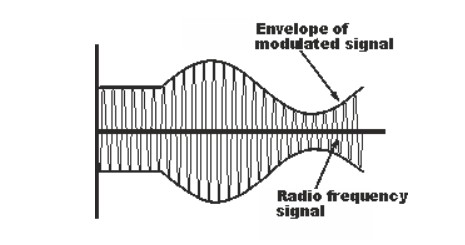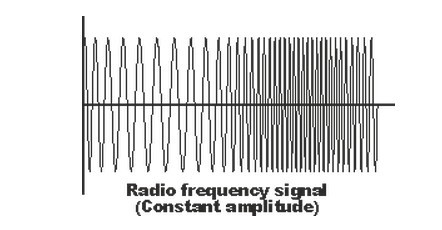Products Category
- FM Transmitter
- 0-50w 50w-1000w 2kw-10kw 10kw+
- TV Transmitter
- 0-50w 50-1kw 2kw-10kw
- FM Antenna
- TV Antenna
- Antenna Accessory
- Cable Connector Power Splitter Dummy Load
- RF Transistor
- Power Supply
- Audio Equipments
- DTV Front End Equipment
- Link System
- STL system Microwave Link system
- FM Radio
- Power Meter
- Other Products
- Special for Coronavirus
Products Tags
Fmuser Sites
- es.fmuser.net
- it.fmuser.net
- fr.fmuser.net
- de.fmuser.net
- af.fmuser.net ->Afrikaans
- sq.fmuser.net ->Albanian
- ar.fmuser.net ->Arabic
- hy.fmuser.net ->Armenian
- az.fmuser.net ->Azerbaijani
- eu.fmuser.net ->Basque
- be.fmuser.net ->Belarusian
- bg.fmuser.net ->Bulgarian
- ca.fmuser.net ->Catalan
- zh-CN.fmuser.net ->Chinese (Simplified)
- zh-TW.fmuser.net ->Chinese (Traditional)
- hr.fmuser.net ->Croatian
- cs.fmuser.net ->Czech
- da.fmuser.net ->Danish
- nl.fmuser.net ->Dutch
- et.fmuser.net ->Estonian
- tl.fmuser.net ->Filipino
- fi.fmuser.net ->Finnish
- fr.fmuser.net ->French
- gl.fmuser.net ->Galician
- ka.fmuser.net ->Georgian
- de.fmuser.net ->German
- el.fmuser.net ->Greek
- ht.fmuser.net ->Haitian Creole
- iw.fmuser.net ->Hebrew
- hi.fmuser.net ->Hindi
- hu.fmuser.net ->Hungarian
- is.fmuser.net ->Icelandic
- id.fmuser.net ->Indonesian
- ga.fmuser.net ->Irish
- it.fmuser.net ->Italian
- ja.fmuser.net ->Japanese
- ko.fmuser.net ->Korean
- lv.fmuser.net ->Latvian
- lt.fmuser.net ->Lithuanian
- mk.fmuser.net ->Macedonian
- ms.fmuser.net ->Malay
- mt.fmuser.net ->Maltese
- no.fmuser.net ->Norwegian
- fa.fmuser.net ->Persian
- pl.fmuser.net ->Polish
- pt.fmuser.net ->Portuguese
- ro.fmuser.net ->Romanian
- ru.fmuser.net ->Russian
- sr.fmuser.net ->Serbian
- sk.fmuser.net ->Slovak
- sl.fmuser.net ->Slovenian
- es.fmuser.net ->Spanish
- sw.fmuser.net ->Swahili
- sv.fmuser.net ->Swedish
- th.fmuser.net ->Thai
- tr.fmuser.net ->Turkish
- uk.fmuser.net ->Ukrainian
- ur.fmuser.net ->Urdu
- vi.fmuser.net ->Vietnamese
- cy.fmuser.net ->Welsh
- yi.fmuser.net ->Yiddish
Modulation techniques overview
Modulation types tutorial includes:
• Types of modulation
• ITU radio emission designations
Today vast amounts of information are communicated using radio communications systems. Both analogue radio communications systems, and digital or data radio communications links are used.
However one of the fundamental aspects of any radio communications transmission system is modulation, or the way in which the information is superimposed on the radio carrier.
In order that a steady radio signal or "radio carrier" can carry information it must be changed or modulated in one way so that the information can be conveyed from one place to another.
Basic types of modulation
There are three main ways in which a radio communications or RF signal can be modulated:
Amplitude modulation, AM: As the name implies, this form of modulation involves modulating the amplitude or intensity of the signal.

Frequency modulation, FM: This form of modulation varies the frequency in line with the modulating signal.

Phase modulation, PM: As the name indicates, phase modulation varies the phase of the carrier in line with the modulating signal.

Each type of modulation has its own advantages and disadvantages, and accordingly they are all used in different radio communications applications.
In addition to the three main basic forms of modulation or modulation techniques, there are many variants of each type. Again these modulation techniques are used in a variety of applications, some for analogue applications, and others for digital applications.
Angle Modulation
Angle modulation is a name given to forms of modulation that are based on altering the angle or phase of a sinusoidal carrier. Using angle modulation there is no change inth e amplitude of the carrier.
The two forms of modulation that fall into the angle modulation category are frequency modulation and phase modulation.
Both types of angle modulation, namely frequency modulation and phase modulation are linked because frequency is the derivative of phase, i.e. frequency is the rate of change of phase.
Another way of looking at the link between the two types of modulation is that a frequency modulated signal can be generated by first integrating the modulating waveform and then using the result as the input to a phase modulator. Conversely, a phase modulated signal can be generated by first differentiating the modulating signal and then using the result as the input to a frequency modulator.
Signal bandwidth
One key element of any signal is the bandwidth it occupies. This is important because it defines the channel bandwidth required, and hence the number of channels that can be accommodated within a given segment of radio spectrum. With pressure on the radio spectrum increasing, the radio signal bandwidth is an important feature of any type of radio emission or transmission.
The bandwidth is governed by two major features:
The type of modulation Some forms of modulation use their bandwidth more effectively than others. Accordingly where spectrum usage is of importance, this alone may dictate the choice of modulation.
The bandwidth of the modulating signal: A law called Shannon's law determines the minimum bandwidth through which a signal can be transmitted. In general, the wider the bandwidth of the modulating signal, the wider the bandwidth required.
Modulating signal type
Apart from the form of modulation itself the type of signal being used to modulate the carrier also has a bearing on the signal. Analogue and data are two very different forms of modulating signal and need to be treated differently. While different formats of actual modulation may be used, the type of signal being applied via the modulator also have a bearing on the signal.
Signals for high quality stereo broadcasting will be treated differently to signals that provide digital telemetry for example. As a result, it is often important to know the signal type that needs to be carried by the RF carrier.





